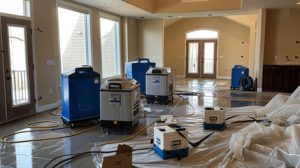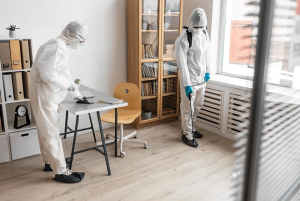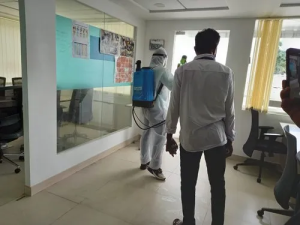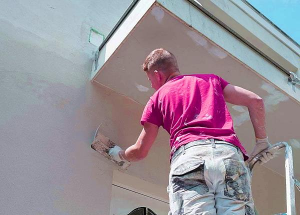Plumbing is a vital trade that keeps our homes, workplaces, and schools running smoothly. Plumbers are responsible for the installation and repair of pipes, fixtures, and appliances like sinks, toilets, and water heaters.
Plumbers also work with more specialized systems in commercial and industrial settings, like office buildings, restaurants, hospitals, and power plants. These systems have larger piping and are connected to more complex equipment. Visit https://www.westminsterplumbingllc.com/ to learn more.

Plumbers install piping and fixtures such as bathtubs, toilets, showers, water heaters, faucets, drains, and more. They follow blueprints and building codes to ensure the plumbing is properly placed and connected.
This includes ensuring the lines can carry water and other substances, keeping chemicals and other contaminants out of the pipes, and testing to make sure the system is leak-free. Pipefitters and steamfitters also perform some of the same tasks as plumbers, but they work on larger systems that deal with higher volumes of water and more complex plumbing fixtures and equipment.
One of the most common jobs for plumbers is fixing and installing plumbing in new construction. They work alongside other tradespeople to lay out piping and connect it to appliances and water supply. They may also inspect completed projects for safety and quality.
Some plumbers specialize in residential or commercial plumbing. Residential plumbers service homes and apartments, performing a wide range of plumbing tasks including unclogging drains, fixing toilets, and installing sinks, tubs, and faucets. Commercial plumbers service larger buildings such as office buildings, malls, and other non-residential properties. They typically work on more complex piping and plumbing systems that are used by many people at once, such as those found in restaurants and hospitals.
Some plumbers choose to focus on green plumbing practices and offer services such as water conservation and energy efficiency. This type of plumber may recommend and install low-flow toilets, faucets, shower heads, and other devices that minimize waste and conserve water. These plumbers usually have a customer service role, as well, and communicate with customers to understand their needs and explain the benefits of these products. Plumbing is a physically demanding job, and plumbers need to be fit to work in tight spaces and use heavy tools. In addition to physical stamina, plumbers must have good attention to detail and be able to solve problems quickly and effectively. Those who want to become plumbers can start by enrolling in a vocational school program or an apprenticeship that provides training and certification. After completing an apprenticeship, aspiring plumbers can find employment with a company or start their own plumbing business.
Repair
A plumber can offer a wide range of repair services. Some common issues that might require repair include leaks, clogged drains and toilets, water heater problems, and more. A plumber will use a variety of tools and techniques to diagnose and fix the issue.
For example, if a drain seems to be constantly clogging, it could indicate a more serious problem with the sewer line. In this case, the plumber may recommend hydro jetting to clear out the lines. This involves using an infa-red camera to find the clog, then shooting highly pressurized water through the pipes to break up and wash away the clog.
Plumbers can also repair or replace plumbing fixtures such as faucets, toilets, and shower heads. If your current fixtures are outdated or broken, a plumber can install new ones that will be more efficient and durable. In addition, they can help you choose the best new fixtures for your home based on your needs and budget. They can even handle complete plumbing system replacements if needed. This would involve removing old pipes and installing new ones, as well as any necessary electrical work.
Maintenance
Plumbing systems are constantly in use, and it is normal for them to require maintenance from time to time. Professional plumbers have the expertise and knowledge to diagnose problems, provide solutions, and repair them effectively. They also have access to specialized tools and equipment that may not be available to individuals who attempt to fix plumbing issues on their own.
Leaks are a common problem that occurs in both residential and commercial settings. A leaky pipe or faucet can cause water damage and lead to expensive repairs. It is important to have a plumber regularly inspect your plumbing system to ensure that there are no issues that need to be addressed.
Clogged drains are another common issue that requires the help of a plumber. They can be caused by excess waste, food scraps, or foreign objects that get trapped in the drain. Plumbers have specialized tools that allow them to clear even the most stubborn clogs without damaging the pipes or fixtures.
Plumbing technicians can also assist with installing and maintaining HVAC systems, as well as water heaters. In some cases, they may need to work on dangerous or confined spaces, so it is important that they follow all safety protocols and regulations.
Plumbers are in demand, and the job offers a good salary with plenty of opportunities for advancement. They can choose to work for large plumbing companies or start their own businesses. Those who enjoy working with their hands and have a knack for problem-solving may find this to be an ideal career choice. Those who want to become a plumber can begin by enrolling in a vocational school or trade program that offers certification upon completion. In addition, many states offer apprenticeship programs that pair apprentices with experienced plumbers to provide on-the-job training and experience. Those who have advanced training or are licensed plumbers often earn higher hourly rates and can open their own plumbing businesses. Regardless of the specific job duties, all plumbers must have excellent communication skills and be able to effectively explain complex plumbing issues in easy-to-understand terms.
Customer Service
Plumbing is a service industry, and plumbers often interact directly with customers. They may answer questions about products and services, provide pricing estimates, and ensure that customers are satisfied with their work. Plumbers who specialize in customer service often have additional training and certification in communicating with customers and addressing their concerns.
The skills that plumbers need to perform their job duties include technical knowledge of plumbing systems, practical experience with tools and equipment, and customer-service abilities. They must be able to interpret blueprints and other project documents to determine the best placement for pipes and fixtures. They also need strong physical stamina to lift heavy objects and navigate tight spaces. In some roles, plumbers may need to be on-call for emergency situations, which can require them to work evenings or weekends. They need strong communication and problem-solving skills to explain complex plumbing issues to customers in non-technical terms.








